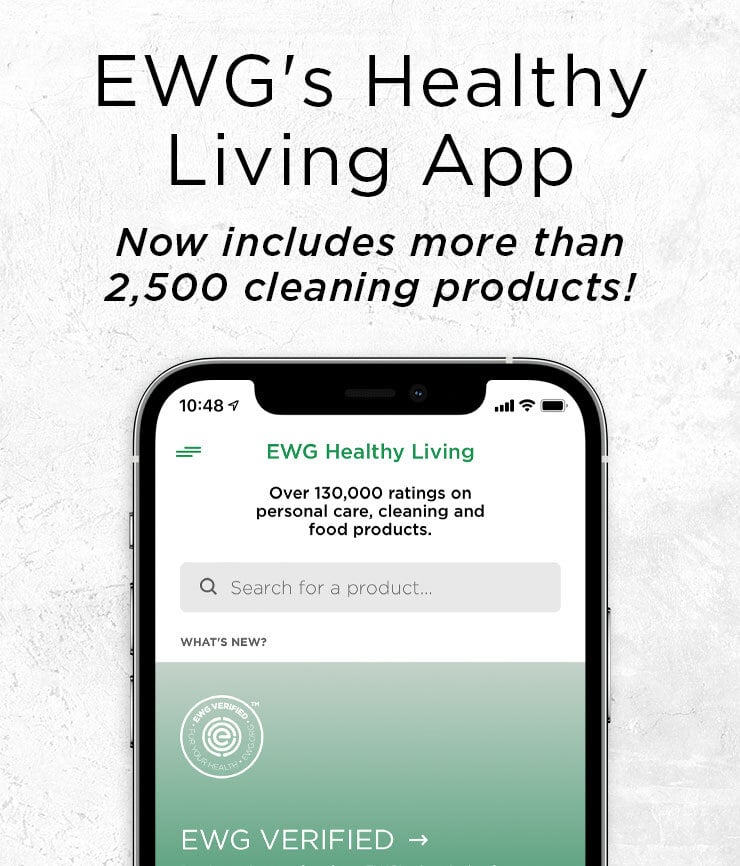Raisins: No. 1 on the Dirty Dozen™ list?
By Thomas Galligan, Ph.D., Toxicologist
WEDNESDAY, MARCH 25, 2020
For the first time since 2007, the Department of Agriculture included raisins in its most recent tests for pesticide residues on fruits and vegetables, and the results are shocking: Of more than 750 raisin samples analyzed, 99 percent tested positive for at least two pesticides. On average, each sample was contaminated with more than 13 pesticides, and one sample had 26 pesticides.
EWG does not usually analyze processed foods like raisins for our annual Shopper’s Guide to Pesticides in Produce™. But because of the heavy pesticide loads USDA found, we wanted to see how raisins compare to the fresh produce on our Dirty Dozen™ list. After running the analysis again, we found that if raisins were included, they would rank No. 1. By a wide margin, raisins would rank higher fresh grapes, which would rank seventh.
The bottom line: Raisins are one of the dirtiest produce commodities on the market – and even some organic raisins are contaminated.
Children under the age of 15 eat a total of about 208 million pounds of raisins each year – about half the raisins consumed in the U.S., according to Zion Market Research. The average American consumed about 1.25 pounds of raisins in 2017, the latest year for which the USDA has information. Zion’s industry analysis shows that slightly less than two-thirds of raisins are consumed as ingredients in other foods, with the rest eaten as a stand-alone snack.
We’re particularly concerned about the hazards raisins may pose to children, not just because they’re a common kids’ snack, but also because several of the most commonly detected pesticides on raisins can harm the still-developing brain and reproductive systems of infants and children. Here are some of the potentially harmful pesticides USDA found on raisins:
- Two neonicotinoids, the bee-killing pesticides that can also harm brain development. Imidacloprid was detected on 84 percent of raisins, and acetamiprid on 13 percent.
- Two pesticides associated with cancer and damage to the developing nervous system. Bifenthrin was found on 77 percent of raisin samples, and tebuconazole on 62 percent. Both chemicals are developmentally neurotoxic in animals and are classified by the Environmental Protection Agency as possible human carcinogens. Tebuconazole is also linked to endocrine disruptionand impaired reproductive development.
- Chlorpyrifos, another brain-damaging pesticide, which has been banned in the European Union while the U.S. refuses to follow suit, was detected on 5 percent of raisins.
Our concern is not just for pesticides sprayed on crop fields. After drying, conventionally produced raisins are usually fumigated with toxic gases to control pests during storage. Fumigant residues can remain in foods after treatment, potentially posing hazards to consumer health, but the USDA does not test for fumigant residues.
Fumigants are also hazardous for workers and the environment. The long-time fumigant of choice was methyl bromide – now banned for use in the U.S., except on imported or exported goods, because it damages the atmosphere’s ozone. Instead, dried fruit processors can use phosphine or sulfuryl fluoride. In a classic case of regrettable substitution, the EPA has also proposed ethylene oxide – a known human carcinogen – as another potential alternative to methyl bromide.
The USDA tested both conventional and organic raisins. In general, pesticides were detected less frequently on organic raisins, but in some cases, there were no differences between organic and conventional raisins. Bifenthrin and chlorpyrifos were detected about as often, at comparable levels, on both conventional and organic raisins. These pesticides cannot be used in the production of organic crops, so it is unclear why organic raisins are contaminated with these pesticides.
Still, consumers should choose organic raisins when possible, since organic raisins tended to have fewer pesticide residues and can’t be fumigated. However, since organic raisins are not pesticide free – 78 percent of organic raisins were contaminated with bifenthrin – we recommend that consumers choose fresh produce from our Clean Fifteen™ list, instead of raisins of any variety.
Shoppers looking for dried and shelf-stable alternatives to raisins may want to choose prunes, which tend to be less contaminated than both conventional and organic raisins, according to USDA’s most recent tests.
More on prunes:
- Only 16 percent of conventional prunes tested positive for two or more pesticides, compared to 99 percent of conventional raisins and 91 percent of organic raisins.
- The average conventional prune tested positive for just one pesticide, compared to more than 13 on the average conventional raisin and four on the average organic raisin.
- The maximum number of pesticides detected on a single prune sample was four, compared to 26 on conventional raisins and 12 on organic raisins.
- 50 percent of conventional prunes were free from detectable pesticides, compared to only one percent of conventional and organic raisins.
Other EWG Resources

EWG's Tap Water Database

Children's Health Initiative

EWG's Healthy Living App

Guide to Healthy Cleaning

EWG's Food Scores

EWG's Skin Deep

Safe Cell Phone Use





 Skin Deep
Skin Deep
 Cancer Prevention Within Reach
Cancer Prevention Within Reach
 Shopper's Guide to Pesticides in Produce™
Shopper's Guide to Pesticides in Produce™
 Guide to Healthy Cleaning
Guide to Healthy Cleaning
 EWG's Tap Water Database
EWG's Tap Water Database
 Food Scores
Food Scores
